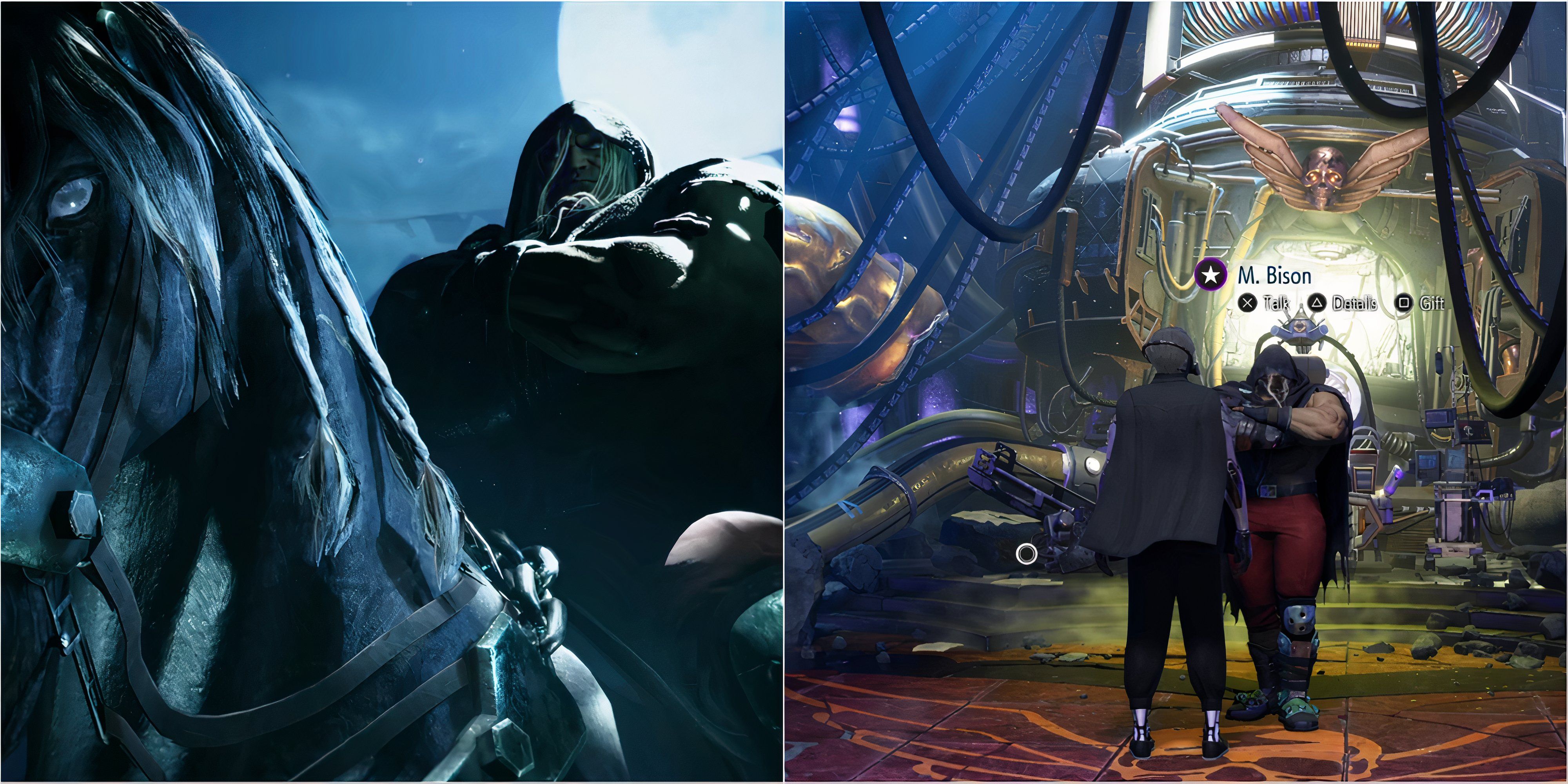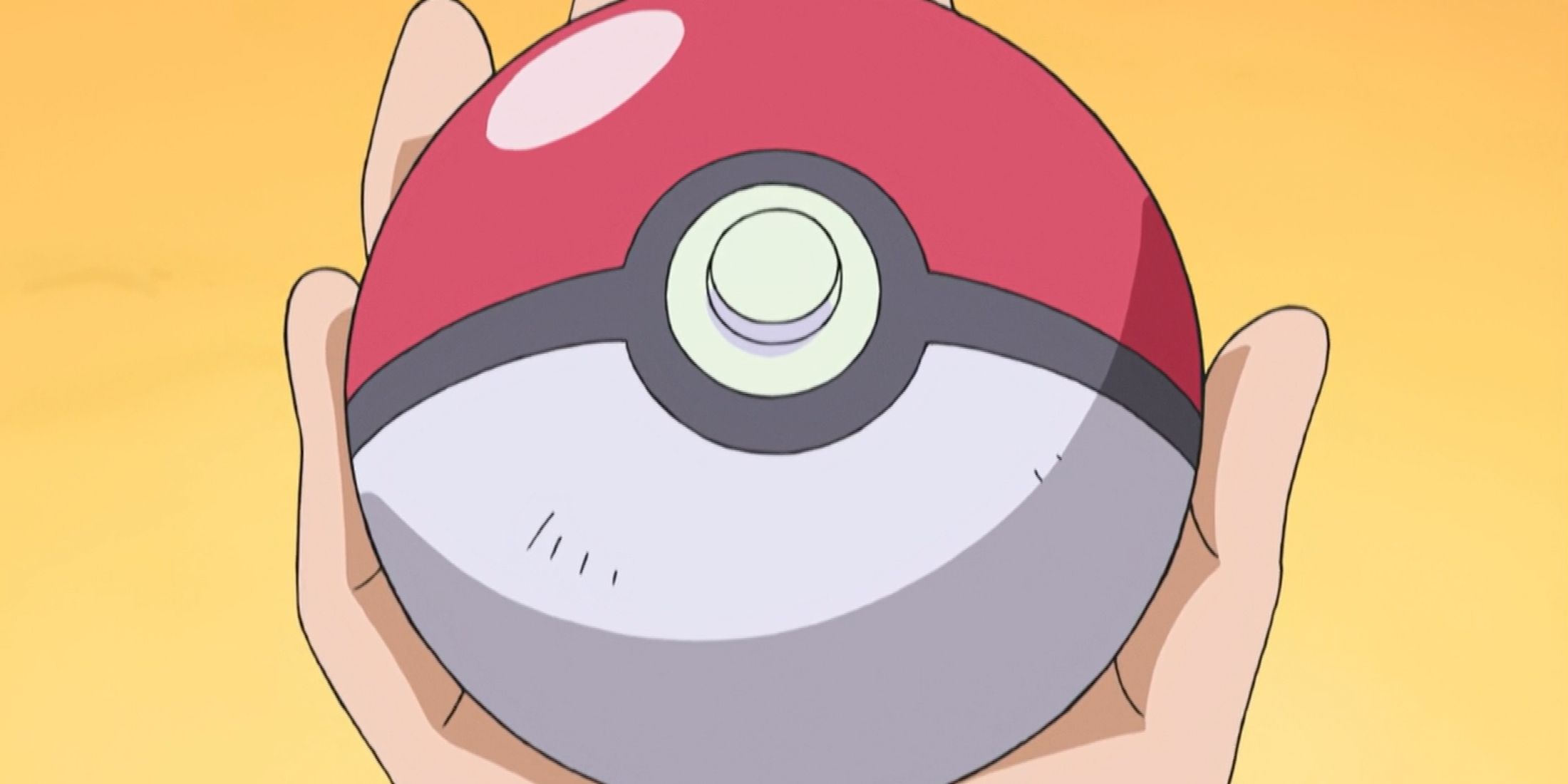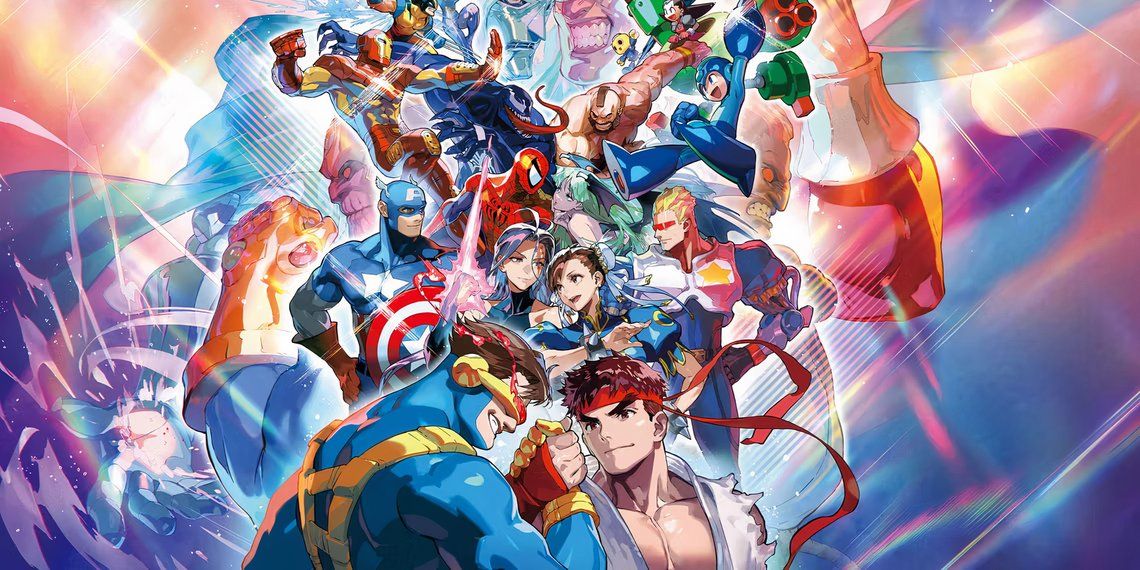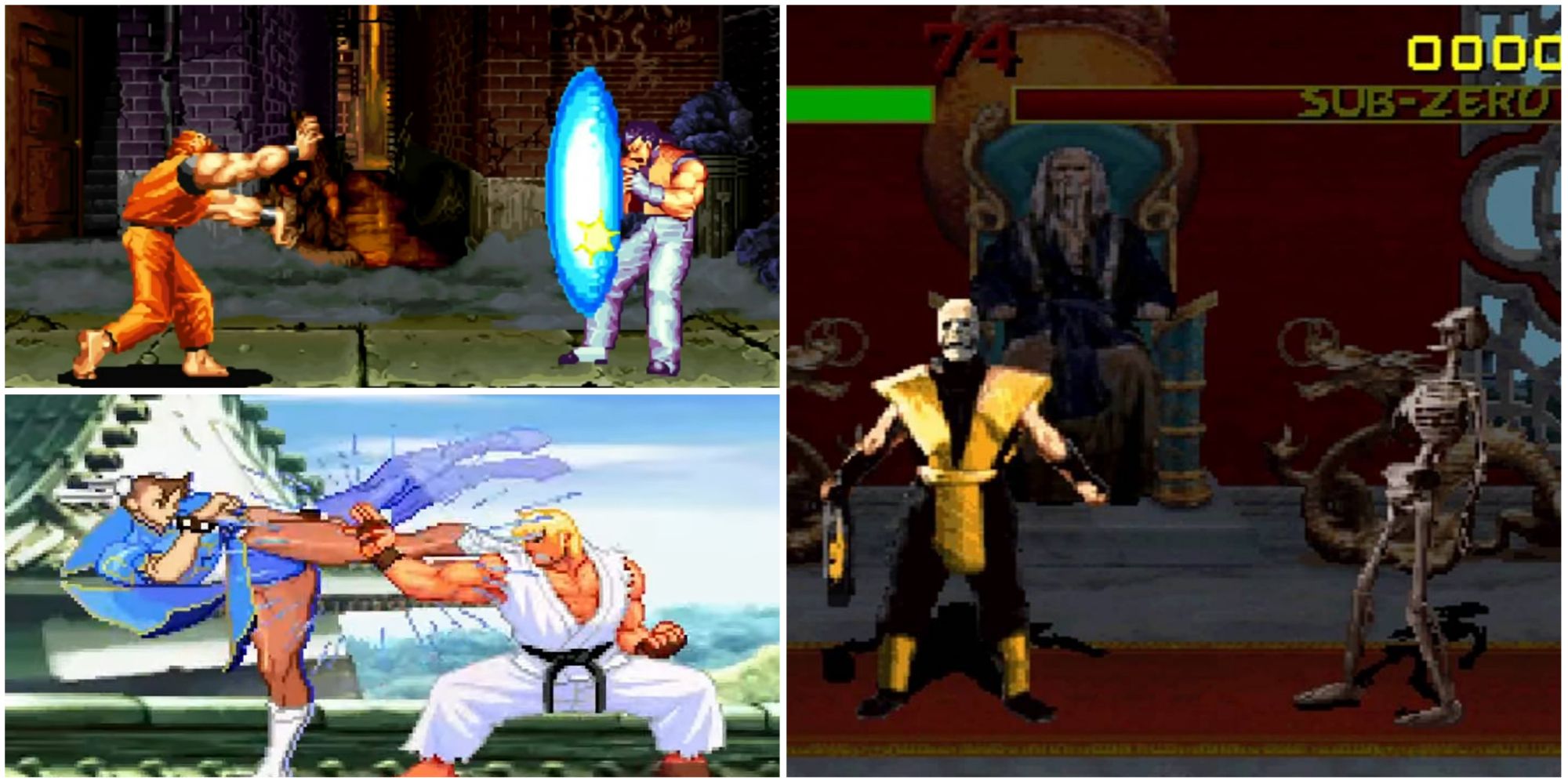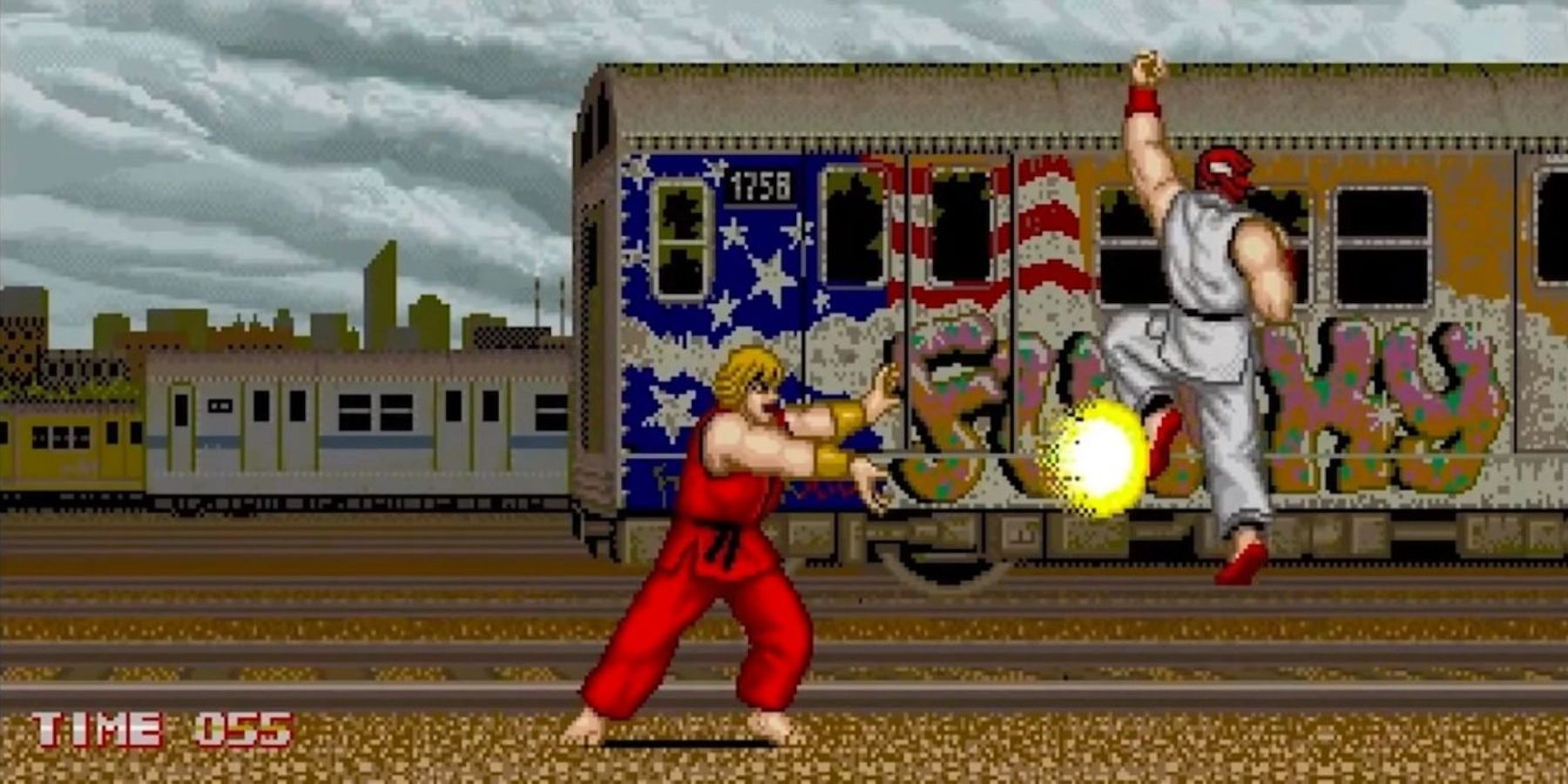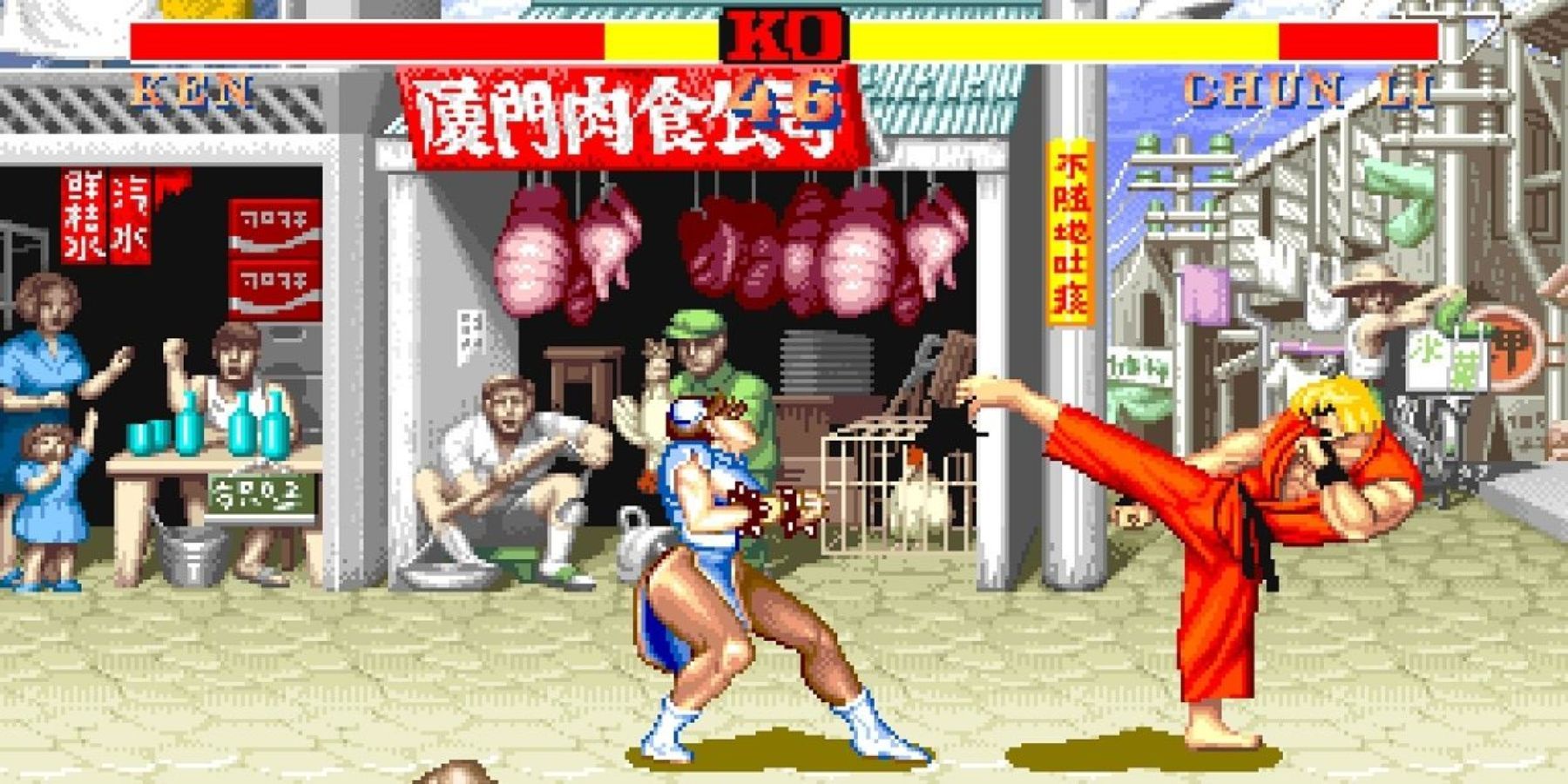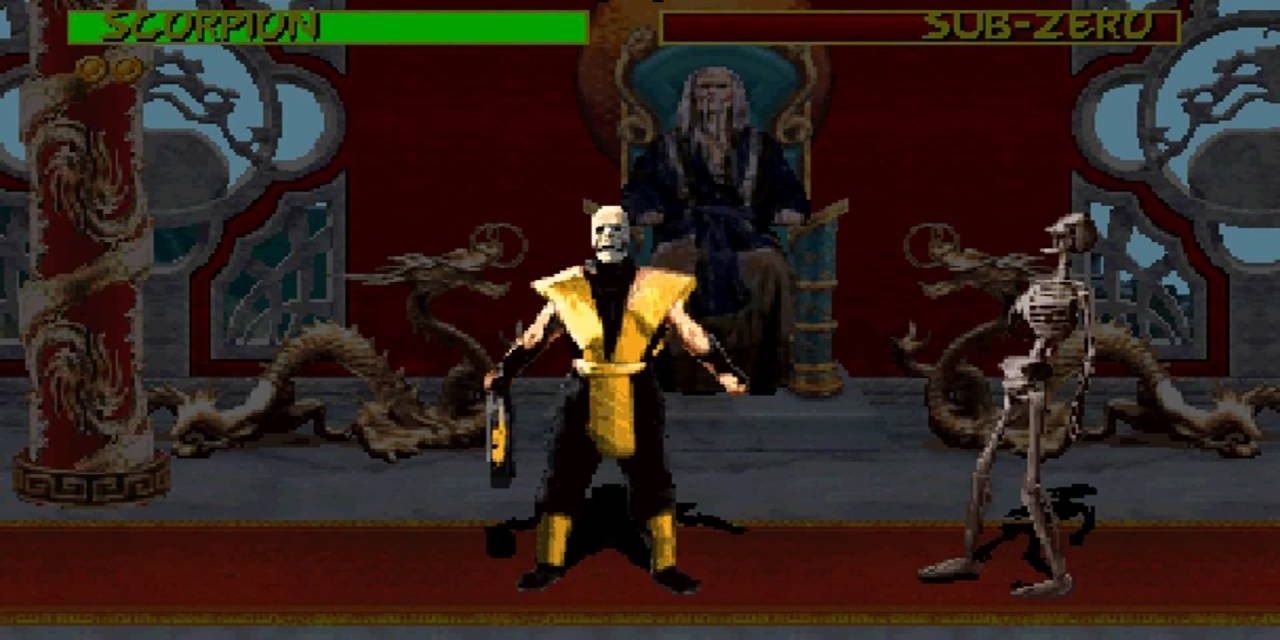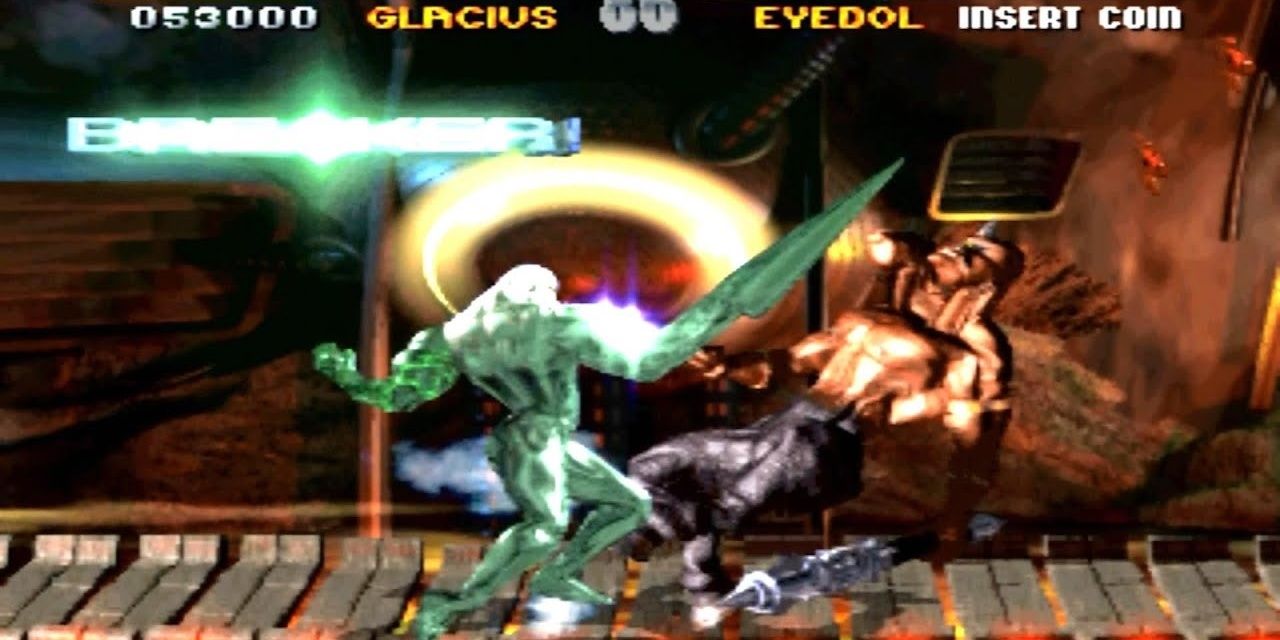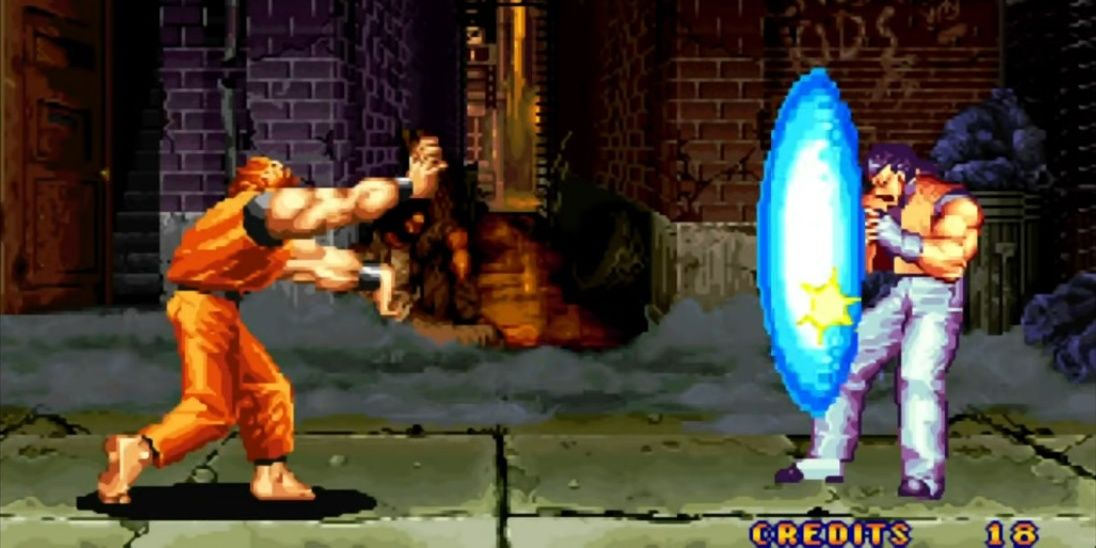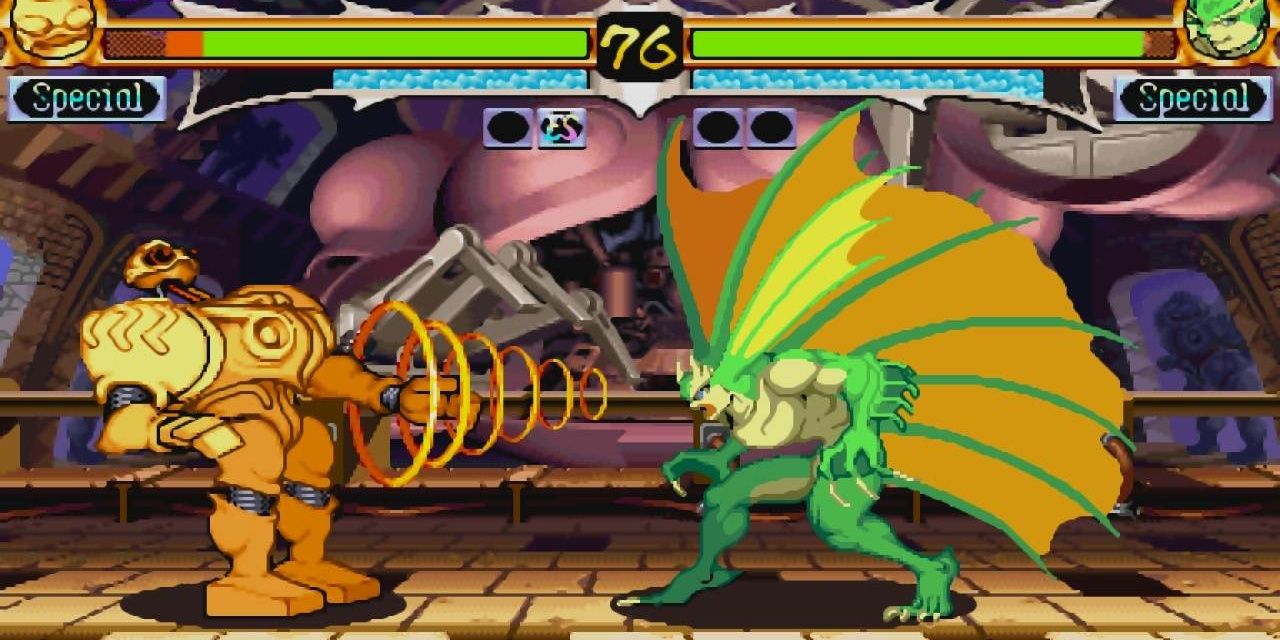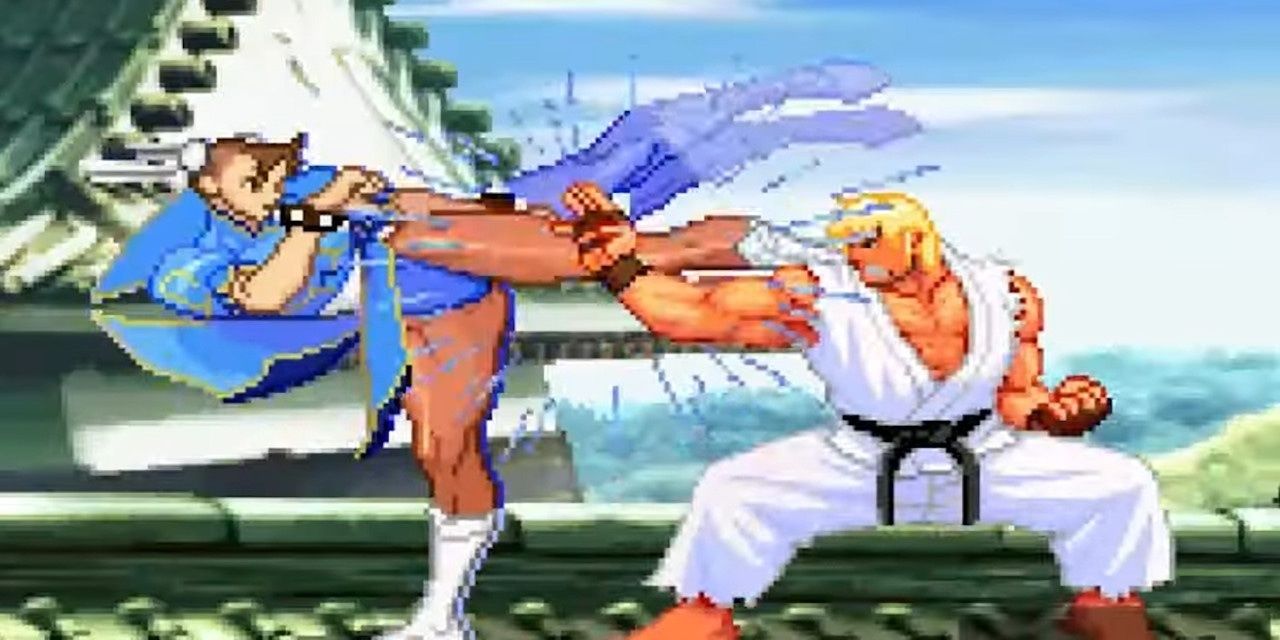Even the simplest games can contain some intricate techniques. Players learned to get ahead in Tetris by doing T-Spins. They studied the way the jumping physics in Super Mario Bros worked to master that game too. Then there are fighting games, which are full of fiddly commands, complex character types, and extra skills to read up on.
But they didn’t start off that way. They too just had punches and kicks until the developers thought up new and exciting ideas to keep the genre going. Some of their ideas fell by the wayside, while others became the most famous techniques in fighting games.
7 Specials
In the beginning, there were only punches, like in Sega’s Heavyweight Champ. Then they added kicks, and games like Karate Champ and International Karate tried to replicate the points-based bouts in martial arts tournaments. That was good enough at the time. Though their sidescrolling beat ‘em up cousins began mixing things up with additional command attacks like headbutts and spinning kicks. What would a fighting game be like with those moves?
Ryu and Ken’s classic Hadōkens, Shoryukens, and Hurricane Kicks could be done in the original Street Fighter and could finish off opponents like Gen, Adon, and Sagat quickly once they hit. Shame the controls were so stiff and awkward that this was hard to do. Nonetheless, they were there. Even if it wasn't until the sequel that those moves got immortalized as truly something special.
6 Combos
However, the most revolutionary thing Street Fighter 2 did was introduce combos. Before the game, the only way to string multiple attacks was to fit one in after the animation for the other finished (called ‘links’ in the FGC). That, or they had to be done by set command chains like in beat ‘em ups. As the story goes, SF2’s devs came across a glitch where certain attacks could cancel out into others.
At first, they tried to get rid of them like any other bug. But in the end, they fine-tuned them. Their work led to a new form of gameplay where players tried to make the best combination attacks, or ‘combos’. Nowadays, it’s hard to imagine the genre without them. They're as much a staple of fighting games as Heals in RPGs and guns in FPS games.
5 Fatalities
Street Fighter 2 was fun, but it looked like kids’ stuff next to Mortal Kombat. Midway’s game offered the same number of fireballs and uppercuts. It just threw in a dark atmosphere with intimidating characters like Scorpion and Goro, and a hefty dose of blood with each strike for good measure. Most infamously, players could kill their opponents after beating them with their character’s Fatality.
To say it caused a stir would be an understatement. Parents complained, the government intervened, rating boards were set up, and a host of imitators tried to copy MK’s formula. Today, it’s rare to find Fatalities outside the MK series, though a few games like Guilty Gear, BlazBlue, Samurai Shodown, and SoulCalibur have dabbled in Instant Kill moves.
4 Combo Breakers
Killer Instinct was another MK imitator, albeit made with Midway’s help by Rare. It used computerized models instead of digitized sprites and was about building bigger, longer, more ultra combos. Yet its moody urban fantasy settings, blood, and ‘No Mercy’ finishers had MK’s DNA all over it. Still, it had one skill that was unique to it: the C-C-C-Combo Breaker.
Players could stop their opponent’s onslaught by forcing them back with a strike. As simple as it sounds, it was impressive to see it in action. The MK series would bring the Breakers back for MK9, MKX, and MK11, and the Street Fighter Alpha series had a similar mechanic with their Alpha Counters. Yet the 2013 Killer Instinct reboot did it best, expanding on the concept with Shadow Counters, Lockouts, and more.
3 Super Moves
Restrained by tighter censorship laws on violence, Japan’s fighting games rarely (if ever) got as gory as their Western counterparts. The bloodiest the Street Fighter 2 games got was showing the loser’s battered faces after bouts, and even they got cleaned up for the consoles. So, they rivaled the likes of MK with style instead.
SNK’s Art of Fighting introduced a meter that had to be kept topped up to fuel the character’s specials. If players had the opportunity, they could spend the whole thing on one big, flashy attack to wipe out their foe. The risk & reward from these Super Moves would spread across the genre, becoming a necessity for 2D games before eventually reaching its 3D cousins in Soulcalibur 6 and Tekken 7.
2 EX Moves
Once the meter for Super Moves was added, the developers were left wondering how else they could use it. They gave the characters more super moves and more special mechanics like Dodge Rolls and Alpha Counters. Ironically, one mechanic that’s stood the test of time debuted in a series that hasn’t had a new installment since 1997, as the Darkstalkers games introduced EX Moves (originally ES moves).
If players did a special by pressing two punches or two kicks, they’d boost its strength at the cost of a little meter. It encouraged offensive play and using the game's resources. So, there was no way it could stay in one fighting game. Every Street Fighter game since 3: 2nd Impact has used them. They’ve also turned up in the past decade’s worth of King of Fighters, Mortal Kombat, and Injustice games. If only its mother series could get as much love.
1 Parries
Countermoves aren’t the most exciting skills on paper. SNK made the most of them with Geese Howard’s counter throws (“Predictabo!”). Tekken and Virtua Fighter turned opponents’ attacks against them with Attack Reversals. Then there were Parries. For a move that swipes the opponent’s strike aside, it’s come in many forms. In Street Fighter 3’s case, it saved the series from obscurity.
Pressing Forward while blocking would parry attacks, skipping chip damage and giving the defender the advantage. That’s simple enough for single attacks but really difficult to do against multi-hit supers. When Daigo ‘The Beast’ Umehara clutched victory from the jaws of defeat by parrying Justin Wong’s 17-hit super perfectly at Evo 2004, it changed Street Fighter 3: 3rd Strike from a cult classic to a must-play fighter.

